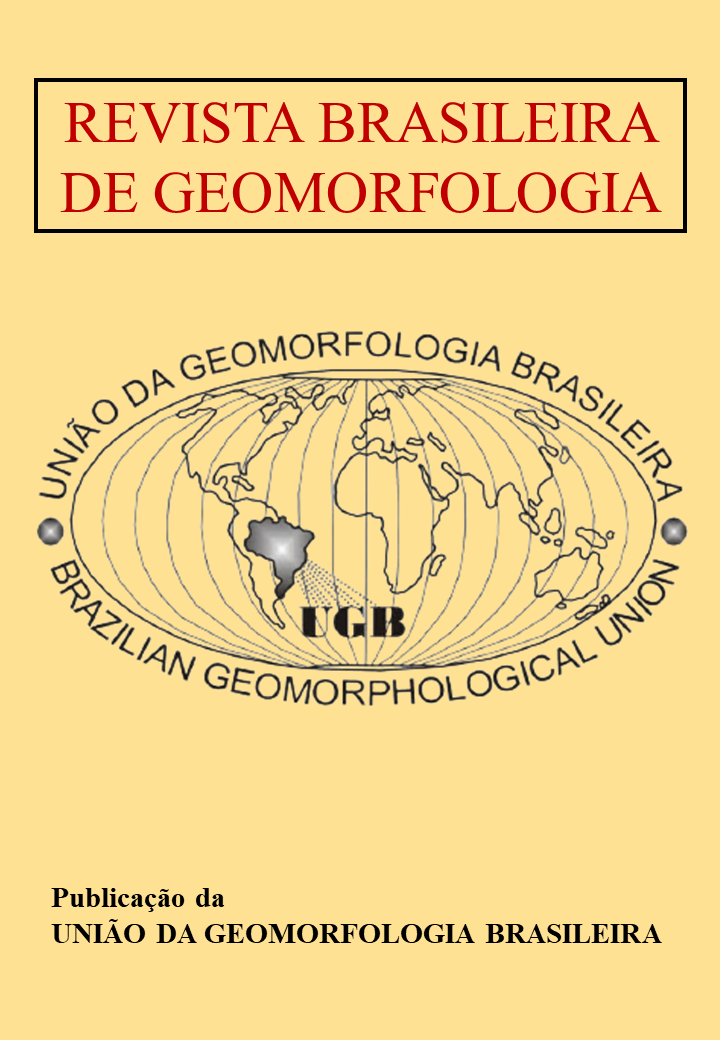Uma breve história sobre o tanque natural fossilífero Jirau 01 - Vale da Megafauna de Itapipoca (CE)
DOI:
https://doi.org/10.20502/rbgeomorfologia.v25i1.2502Keywords:
Fossiliferous natural tank, Granite relief, Etchplanation, Brazilian semi-aridAbstract
The fossiliferous natural tank Jirau 01, located in the municipality of Itapipoca (CE), stands out as one of the main references in geoscientific research on the infilling of Quaternary deposits in the Semi-Arid region of Brazil. Although much has already been clarified about the fossiliferous layer, it is interesting to highlight that the tank deposit is only a small fraction of the complex geomorphological history of this natural tank. In the present work, we propose an evolutionary model of the Jirau 01 tank, presented through block diagrams of the different phases of evolution. The model was based on gathering data obtained in the field, such as assessment of the internal morphology of the depression; and the integrated analysis of structural lineaments extracted from high-resolution images and digital elevation models, both acquired by Remotely Piloted Aircraft (RPA). These stages of research helped in the interpretation of the spatial distribution of minor forms of granite relief and also supported the understanding of the paleoenvironmental context responsible for the phases of redevelopment of this natural depression in subedaphic and/or subaerial conditions. Finally, the analysis of the tank deposit provided important information about the sedimentary infilling, allowing a reconstruction of the geological-geomorphological processes that acted in the formation of the natural fossiliferous tank Jirau 01 during the Quaternary.
Downloads
Downloads
Published
How to Cite
Issue
Section
License

This work is licensed under a Creative Commons Attribution-NonCommercial 4.0 International License.
Author (s) retain copyright and grant the journal right of first publication with the work simultaneously licensed under the Creative Commons Attribution License that allows sharing the work with recognition of its initial publication in this journal.








